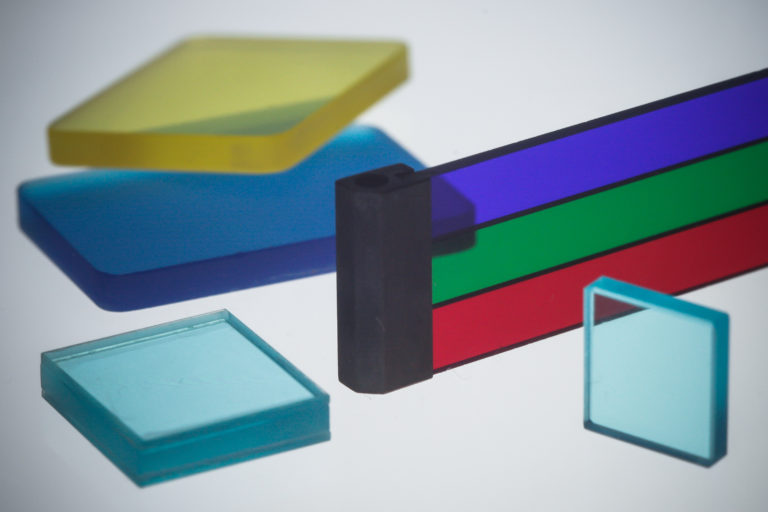OPTICAL MATERIALS
Solaris Optics produces elements made of many different kinds of optical materials among which we can distinguish a few groups:
• Standard optical glasses are inorganic products in molten form and with homogeneous and amorphous structure, without impurities and strains. The most important parameters of these glasses are: index of refraction, Abbe number (νd) and dispersion (rate of change of index with wavelength). Standard optical glasses is a group of glasses characterized by maximum transmission in the visible spectral range. These glasses are classified into two basic groups:
1. Crown glasses (leadless glasses) (νe > 55), are weakly refractive and have low dispersion.
2. Flint glasses (potassium-lead glasses ) (νe < 50), contained of lead oxygen, and have higher index of refraction, and stronger dispersion.
There are a few intermediate groups between the two mentioned above.
• Special optical glasses are optimized from the point of view of precise requirements of optical properties, and generally have individual, dominate characteristic, that differs them from standard glasses with ordinary parameters (e.g. low/high expansion glasses, high transparent glasses, etc.)
• Filter glasses change the spectral properties of optical radiation by selective absorption in optical spectral range. There are: bandpass filters, longpass filters, shortpass filters, neutral density (ND) filters, conversion filters.
• Glass ceramics is an inorganic, non-porous material having crystalline and glass phases together. Such material structure grants glass ceramics its extraordinary properties, and makes it an ideal material for very special tasks, which call for the highest precision. Mainly it is used for production of large mirror substrates (for astronomy) or very small and light ones (for gyroscopes). Glass ceramics has unusual thermal stability. Good example is ZERODUR, which is used by our customers.
• Quartz is characterized by good transmission from UV by VIS up to NIR. We use for the optics both structural forms of quartz:
– crystalline SiO2
– amorphous SiO2 (fused silica)
Crystalline quartz is a material with double refraction, which is used for the polarizers, and retardation plates. Fused silica has very low thermal expansion index, and is very resistive for the most of chemical compounds. Another advantage its high damage threshold and very high melting temperature, which gives possibility of use in 1200oC.
• Crystals: Si, Ge, MgO, CaCO3, CaF2, MgF2, BaF2, Nd:YAG, KDP, KDDP, LiNbO3.


